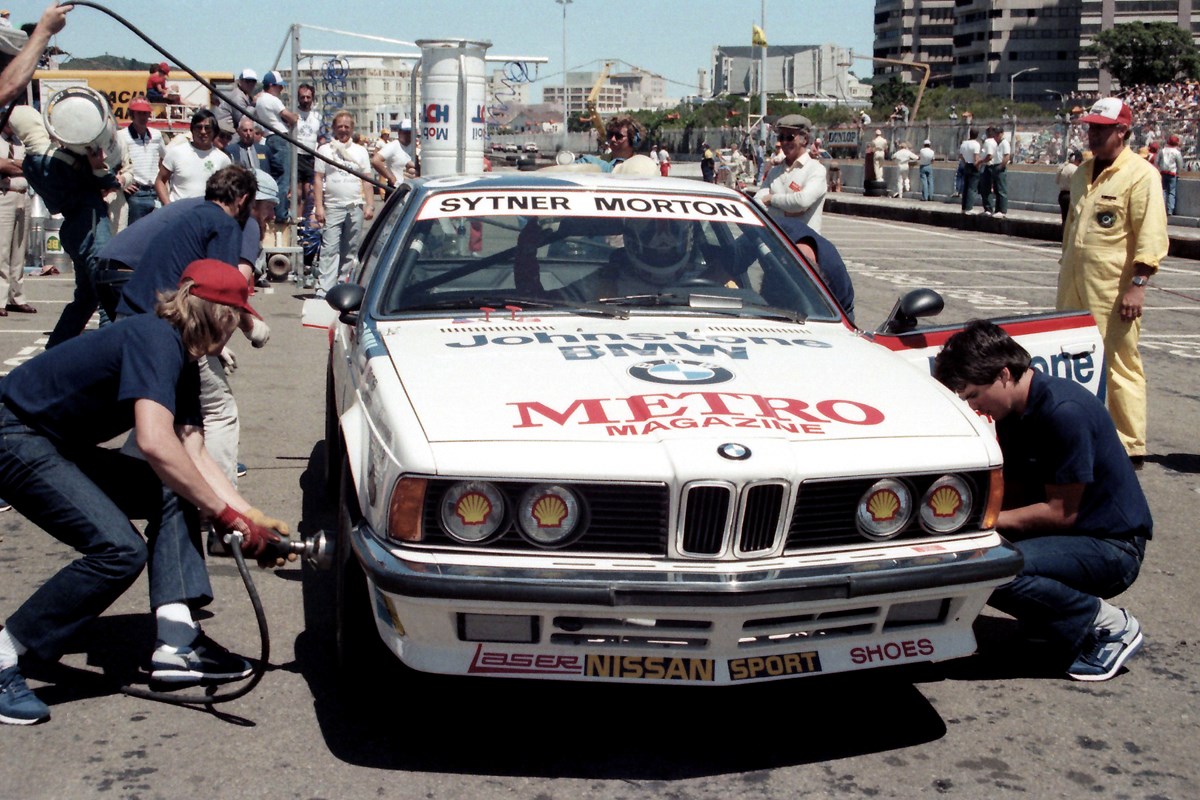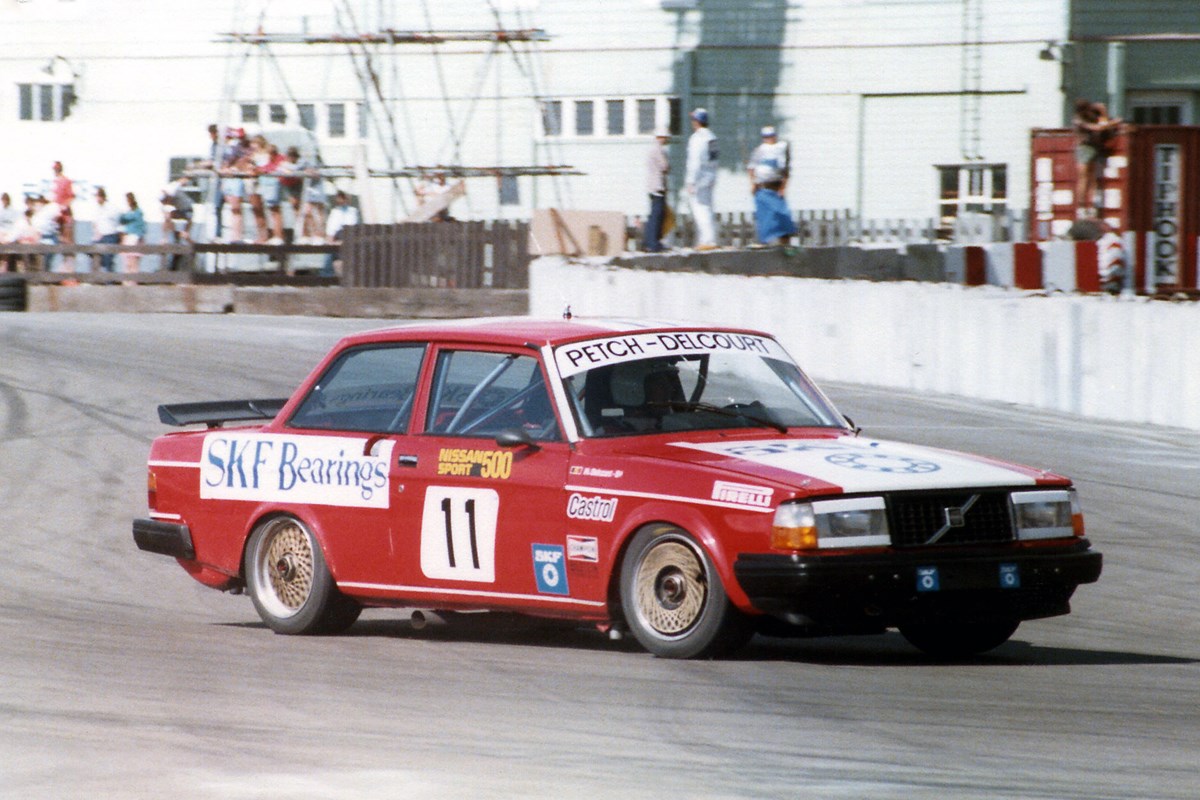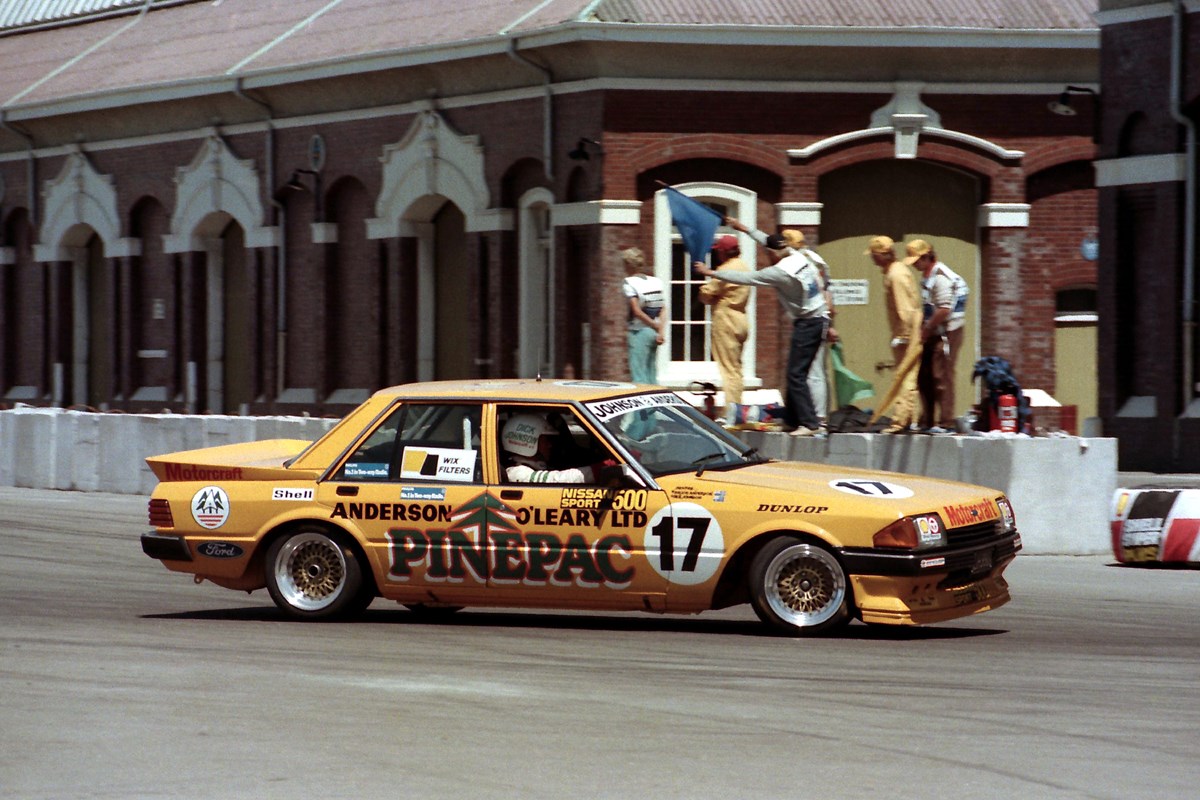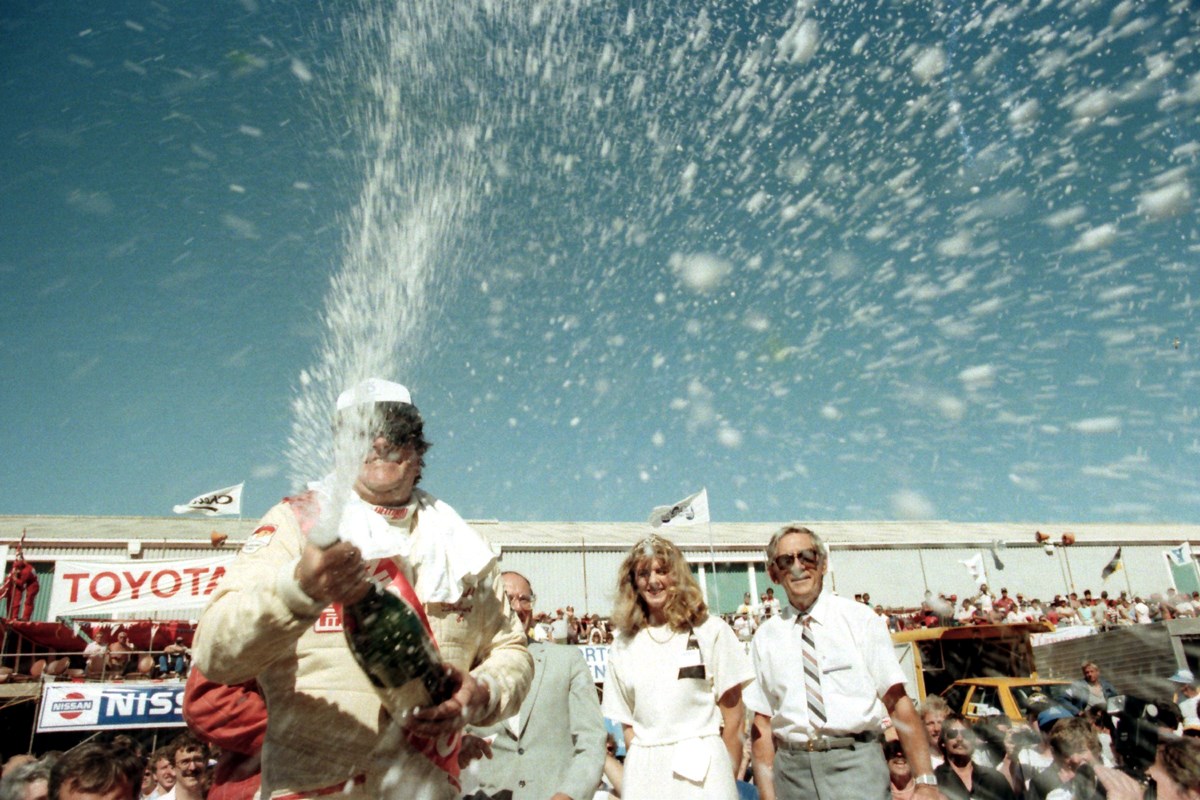It was one of the most memorable days in New Zealand motor racing.
The inaugural Wellington street race took place 35 years ago this weekend, the curtain raiser to the boom-and-bust era of Group A international touring car racing.

These photographs by Martin Smith show off the waterfront and street circuit that was described as demanding in the day and now looks bizarre in the context of modern track construction.
The circuit was lined with shipping containers, excavator tyres and concrete blocks. It raced between the dockyard buildings, beneath the trolley bus lines and over a one-lane bridge at the harbour edge.
It all came together late. On Friday evening I can remember watching F1 world champion Denny Hulme use a forklift to push tyres and concrete blocks into place.
Practice and qualifying took place on Saturday January 26. And the race the following day would be shortened from the originally scheduled 500km to 375km because the lap time was significantly longer than anticipated.
There had been domestic Group A racing in New Zealand starting in late-1984 but the 1985 Nissan Sport 500 was New Zealand’s first international endurance race for the fledgling category that would form the basis for global touring car racing and rallying into the 1990s.

That day the New Zealand TV audience learned the phrase "Stockholm Taxi" as the race was won by the Mark Petch-owned Volvo 240T driven by Belgian Michel Delcourt and Kiwi Robbie Francevic.
It was the beginning of a successful period for Petch team and Volvo with Francevic winning the 1986 Australian Touring Car Championship.
The red Volvo had been delayed in shipping and after arriving in Auckland, it was airlifted to Wellington in a Bristol Freighter and started from a back of the grid after a handful of warm-up laps.
Delcourt raced through the field and was leading inside 20 laps and the Volvo with its bonnet flapping won by about three car lengths from the BMW 635 CSi of John Morton and British racer Frank Sytner.

The cast of stars that weekend included pole-sitter Dick Johnson sharing the Pinepac XE Falcon with Bruce Anderson. Johnson led the early stages before the Falcon ran out of brakes.
Two laps behind was the third placed BMW 635 of Neville Crichton and Wayne Wilkinson.
Peter Brock and Larry Perkins gave the Holden Commodore its race debut in Group A specification and came home in fourth place.
The Rover Vitesse of Scotland’s Tom Walkinshaw and Australia Ron Dickson was an early retirement with gearbox issues.

The inaugural Wellington race set the scene for the "down under" explosion of Group A Touring Car racing. The following year featured a stronger field and in 1987 there were two waterfront races.
Following the January 1987 race the inaugural 11-round FIA World Touring Championship came to the Wellington streets in October following Bathurst 1000 and Calder Park 500 rounds in Australia.
The last Wellington street race was a non-championship V8 Supercars event in 1996.















